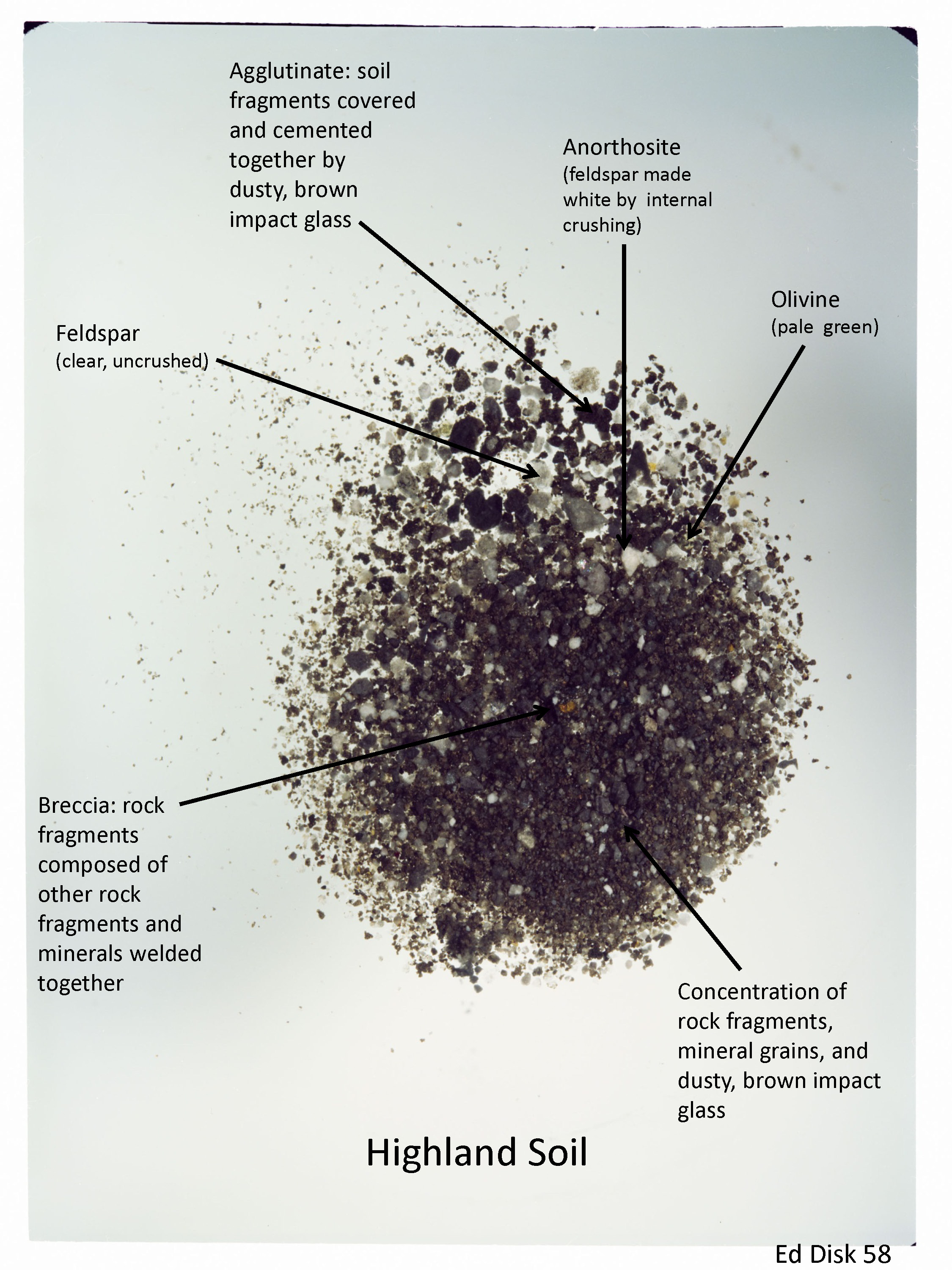Lunar Disk 58: Highland Soil
The fragments composing this soil are from the break up of highlands rocks by meteorites. The fragments are particles of rocks, of broken mineral grains, and of glasses melted from rocks and minerals by the impacts of meteorites on the Moon’s surface.
The most abundant grains are feldspar because it is the most abundant mineral in highlands rocks. The transparent, colorless grains were broken from rocks without being shocked (crushed internally). The white grains are feldspars that have been shocked as well as being broken from rocks by meteorite impacts. The glasses are chilled droplets of melted rock and minerals; they are the products of the most severe effects of meteorite impacts. The glasses are present in several forms and colors: pale green spheres; dark gray and black spheres with rough exteriors; dark brown and black glass splashes on other grains.
This soil was collected by the Apollo 16 astronauts, who landed near the center of the Moon on the light colored highlands between the dark mare areas. This sample consists of coarser grains from the 825 gram soil sample number 6850l. The finer grains and dust, produced in great abundance by meteorite collision with the Moon, have been separated from the sample with a sieve.


